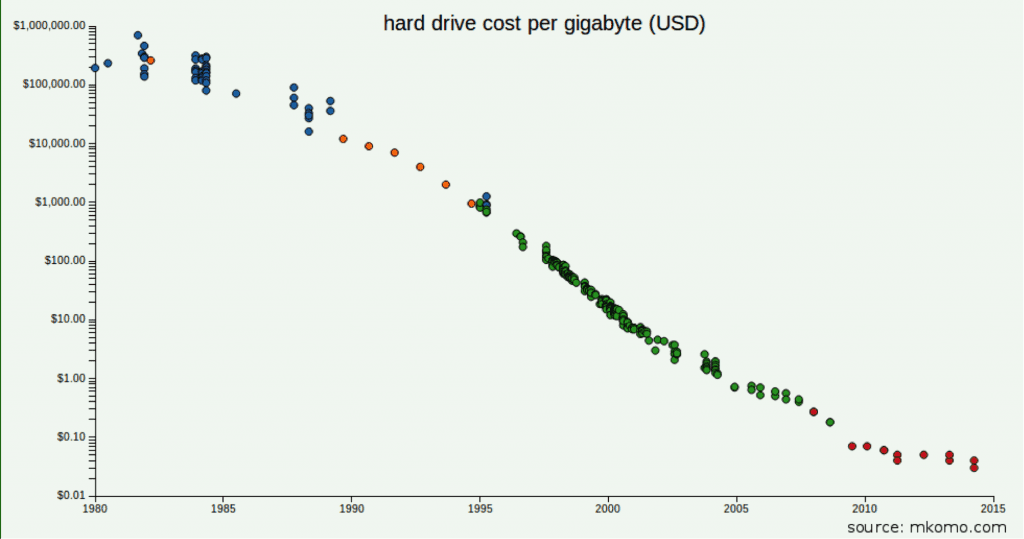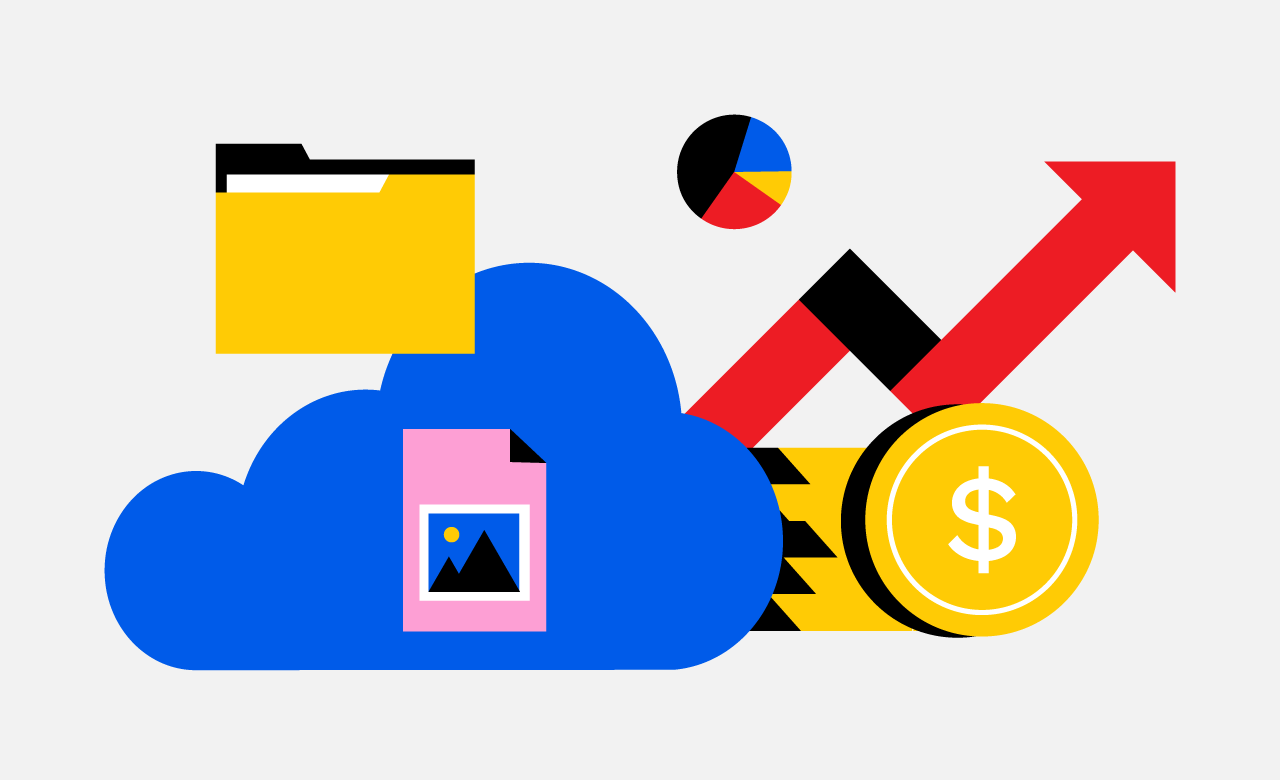Cloud storage pricing has long been in a race to zero, and customers could be the winners if you spend wisely.
Consider that basic storage services are now roughly $0.022 per GB/month from major providers like AWS and Google Cloud. Consumer and small business options like DropBox offer a limited amount of storage for free, and sell 1 to 2 TB for around $99/year — or less than a penny per GB/month.
Customers should find it hard to argue with “almost free” storage that lets you pay-as-you-go and only pay for what you use.
When the alternative is buying enterprise storage arrays and paying for fixed capacity upfront at $2 to $3/GB, the choice seems clear: for customers, falling prices are a net positive.
On the flip side, several articles have pointed out that there can be potential risks to service quality and a potential for future price increases.
Cloud vendors have historically capitalized on these concerns with locked-in rates if you opt for higher storage volumes. Here’s why you should avoid that “markup trap” and what you can do to get the pricing you deserve.
Why You Shouldn’t Pay for More Than You Use
Cloud storage has a major perk in terms of pricing: scalability that grows with you.
Businesses make the mistake of shopping for cloud storage like children’s clothing. Instead of paying ahead for the oversized shoes — or storage — that will fit tomorrow, you can pay for the option that fits today. Why? Because unlike clothing, your storage can seamlessly expand on-demand.
Since the price curve for storage has been trending down for decades, you don’t want to buy a large amount up front.

If a price curve for something looks like this, you want to buy only as much of that item as you need today. Buying two or three years ahead will cost you much more in the future.
Cloud storage has quite a few cost advantages over the traditional on-premises storage model, so it surprised us when we learned several third party providers are playing markup and price lock-in games with cloud storage that contradict the ability to consume cloud storage as a utility.
Typically solutions that connect on-premise infrastructure to cloud storage in some way and bundle the cloud storage with the solution are the ones that charge like an storage array in the cloud instead of storage as a service.
Bundled offerings can work in your favor, but can also work against you if prices are going down. And Amazon has reduced prices dozens of different times for its various services since launching AWS in 2006. The S3 storage service started out at $0.15 per GB/month, and is now available for $0.023 — a nearly 85% decrease.
What Cloud Storage Pricing Red Flags Should I Watch For?
Based on conversations with several customers, we identified several things to beware of when buying cloud storage through a third-party:
- Locked-in pricing. Some providers lock customers into pricing for the term of the contract. This means you can’t ride the cost of cloud storage down as prices drop.
- Fixed upfront capacity. One customer told us they had to buy what amounted to a “cloud shelf” of storage — a fixed amount of storage in a 3 year contract. They were paying for cloud storage they weren’t using yet and were locked in on price, so it was effectively the same as buying on-premise storage.
- Charging for logical capacity rather than actual usage. Most cloud filer solutions deduplicate and compress data to save space in the cloud, so they should pass those savings through to the customer. If they don’t, you’ll pay full tilt for your 20 TB, even though the actual cloud bucket is only at 3TB after dedupe and compression.
- Marked up prices. To top it off, we heard from another customer who had calculated they were getting charged nearly a 100% markup for cloud storage. They were also paying for logical rather than deduped capacity, bringing the markup close to 400%.
- No cloud provider choice. If cloud storage is bundled with another solution, that vendor is probably choosing the cloud provider that works best for them. You should be able to choose the one that works for you.
- Data ownership. You should feel safe if your data is stored in your account with AWS, Google, Microsoft, or another major provider. But what if someone else owns and manages the account? If a small solution provider sits between you and the cloud, there’s a risk you could lose your data if the provider goes out of business (remember Nirvanix, when customers had to scramble to get their data out?).
Cloud storage prices are dropping by half roughly every 18 months, so accepting a fixed price contract makes little sense. Your peers and competitors who sign up later will get better pricing than you.
This works out to the moral equivalent of cable TV pricing. You agree to a one or two year contract to get a promotion, then see a better deal from your provider 12 months later -- but it’s only available to new customers.
You shouldn’t have to keep checking the price of cloud storage to make sure you’re getting the best deal. You should just reap the savings as pricing drops across the industry.
Takeaways on Cloud Storage Pricing
In the end, you are typically best served when you take advantage of the flexible scaling that cloud storage offers.
Buying the headroom before you need it is not necessary or wise with cloud storage. Instead, ride the wave of dropping prices and allocate the savings towards tech that will enhance your organization’s cloud experience.
On that note, we believe it’s clear you should buy cloud storage separately from any on-premises technology that connects you to the cloud. You’d be wary if your ISP offered to bundle AWS S3, Azure BLOB, or Google Cloud Storage with their internet service; you should be equally skeptical of infrastructure vendors doing the same.
An intelligent hybrid cloud file system feels like it’s part of your datacenter, but we believe you should choose your cloud provider and get the full benefit of cloud economics as prices drop. We fully support most public and cloud providers, so you can choose the one that’s best for you.





